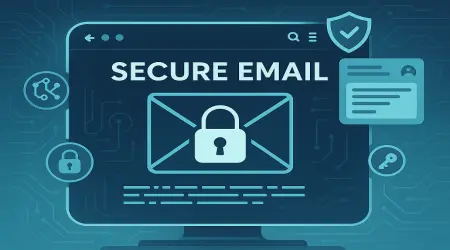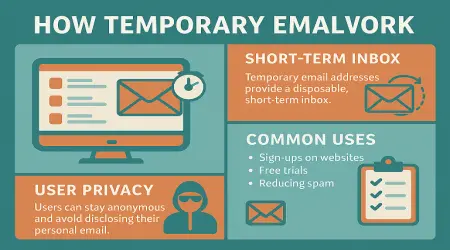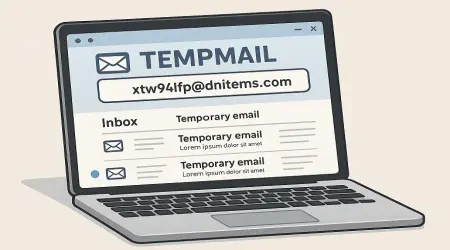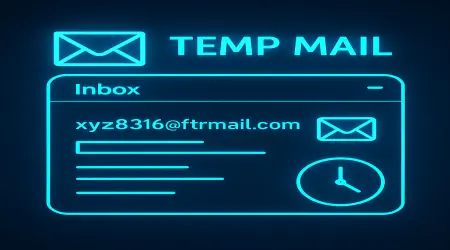

What is the most unhackable email?
What is the most unhackable email?
Brief (emerging) opinion: No purely hackproof email. Proton Mail and Tutanota are the most popular options (end-to-end, zero-access storage, strong privacy practices) to the majority of the people looking to protect themselves (the strongest possible) against the threats of service-side access and casual intercepts. Mailfence (OpenPGP) or the self-hosted solutions are more suitable to more advanced users that must be interoperable in cryptography and control keys. Select depending on your threat model who you are protecting against.
Why I can’t claim a single “most unhackable” winner
“Unhackable” suggests absolute immunity. In practice:
- Even the email of any provider can be read by a determined attacker who can either control your device (malware, physical access).
- Unless care was taken to minimize metadata (who sent a message to whom, whether the message is encrypted or not, title of the subject line), it often leaks.
- Key leakage can be through legal compulsion, bugs in servers or supply-chain attacks.
Due to these facts, the appropriate question is: Which email service reduces the attack surface to your threats?
Want use to tempmail visit: tempmaili.com
Top contenders and why they matter
Proton Mail — end-to-end + zero-access (Swiss base)
Proton (Proton Mail) uses zero-access encryption to encrypt the content of mailboxes so that the servers operated by Proton can not read the message bodies that have been stored on those servers; E2E is default with a Proton account to password based E2E works with non-Proton email addresses. The Swiss jurisdiction and transparency of Proton introduce some legal security, however, there might be metadata and delivery headers that indicate some information. Proton is generally suggested as a secure email, which is secure, user-friendly, and balanced.
Tutanota — open-source, minimal metadata
Tutanota is a holistic encrypted product: it has an in-built E2E, encrypted subject lines and encrypted calendar, and a minimal metadata footprint. It is open-source and privacy-oriented, but with its own encryption system instead of PGP, which makes it easier to use at the expense of interoperability. Tutanota has been involved in the protection of policy of encryption in Europe.
Mailfence — OpenPGP + interoperability
Mailfence is compatible with the standard OpenPGP, allowing users to have total control over keys and interoperability with other PGP subscribers. It makes it appealing to the users who require cryptographic compatibility and control, but PGP key management is more complicated to ordinary users. Mailfence also uses services such as MTA-STS and DANE to harden SMTP.
Skiff, Posteo, Fastmail etc.
Other providers (Skiff, Posteo, Fastmail) have varying positions: some are oriented to UX+privacy, others to low metadata or to not having advertisements. Fastmail and Posteo are good on privacy but they do not offer client-side E2E as Proton/Tutanota does by default. Compare all of them to the features you require.
Features that actually reduce hackability
If your goal is to make compromise extremely difficult, prioritize services (or setups) that deliver:
- End-to-end encryption (E2E) - only the recipient and sender can decrypt the content of the message.
- Zero-knowledge / zero-access storage - provider is unable to access mail stored.
- Minimal metadata gathering - encrypted subject lines and minimal logging.
- Good transport security MTA-STS, DANE to avoid downgrade attacks.
- Effective operational security (2FA, hygiene of devices) - no encryption assists in case passwords are weak.
- Transparency can be established by open-source clients or audits.
Your practical checklist — make your email near-unhackable
- Use a daily mail provider which provides E2E + zero-access (Proton Mail, Tutanota).
- Allow two-factor authentication (use hardware keys as an option such as FIDO2).
- This should be done with a long passphrase (not a duplicate) and a password manager.
- Be sure to update devices and organizational antivirus/anti-malware should be reputable.
- Use VPN to access sensitive email using public Wi-Fi.
- To carry out very sensitive exchange, one should employ PGP and manually manage keys and verify fingerprint face to face.
When to use PGP / S/MIME vs provider E2E
- Use provider E2E (Proton/Tutanota) in case you desire high protection of high usability among users of the same service.
- PGP Use it when you require integration with other mail systems and ultimate user control keys - however, it is complex and prone to UX traps.
Legal and geopolitical considerations
It depends on provider location: Swiss (Proton) and German (Tutanota) providers operate in jurisdictions that have a high privacy norm, yet legislation is subject to change and proposals to legislation (such as EU chat control debates) may coerce providers. Consistently follow up on legal conditions of high-risk use.
When you’re breached — immediate steps
- Uncancellation and renewing of passwords.
- Cancellation of API keys / application passwords.
- PGP keys should be rotated in case they were given out.
- Notify contacts if needed.
- Carry out checking devices forensically; reimage where necessary.
FAQs (at least six)
Q1 - Does an email exist in which the email cannot be hacked?
No. No provider can save you in the event an attacker owns your device, or you are using weak credentials. Unhackable is not a myth, strive to become highly difficult to hack.
Q2 -- Does Proton Mail make the most sense in terms of security?
One of the most friendly and easy-to-use mainstream solutions (E2E, zero-access, Swiss) is Proton Mail. It has been the best choice among many others.
Q3 - Does Tutanota compare better to Proton?
Tutanota is more privative and encrypts more metadata (such as subjects) in other instances; proton features more extensively and ecosystem. You have to choose by what you will put emphasis on (interoperability vs minimal metadata).
Q4 -- Should I use PGP?
PGP provides you with cryptographic control and interoperability, and it is complicated. Cross-provider compatibility Use it when you are comfortable with keys.
Q5 -- Do secure email providers have anything to lose?
A great deal of them have free options (Proton, Tutanota) and are secure to use regularly, whereas paid plans can include extra benefits and features such as additional storage, recovery, and priority support.
Q6 -Is it possible to compel providers to surrender emails?
Yes True but providers can be forced by legal requests. Nevertheless, zero-access E2E might also have the result that the provider cannot decrypt the contents of messages, though metadata and account information can be requested. Jurisdiction matters.
Q7 -- What about self-hosting?
Self-hosting provides total control but puts the onus of operational security and patching on you; errors are expensive. Good when there is expertise in operations.
Conclusion — practical recommendation
If you want the strongest practical protection with minimal fuss, pick a mainstream privacy-focused provider like Proton Mail or Tutanota and follow the checklist above. If you need cross-platform cryptographic control, choose Mailfence / PGP or a self-hosted solution — but be prepared for complexity. Remember: security is layers — provider choice helps a lot, but device hygiene, strong passphrases, 2FA (hardware keys), and mindful sharing are what make an account truly hard to hack.




